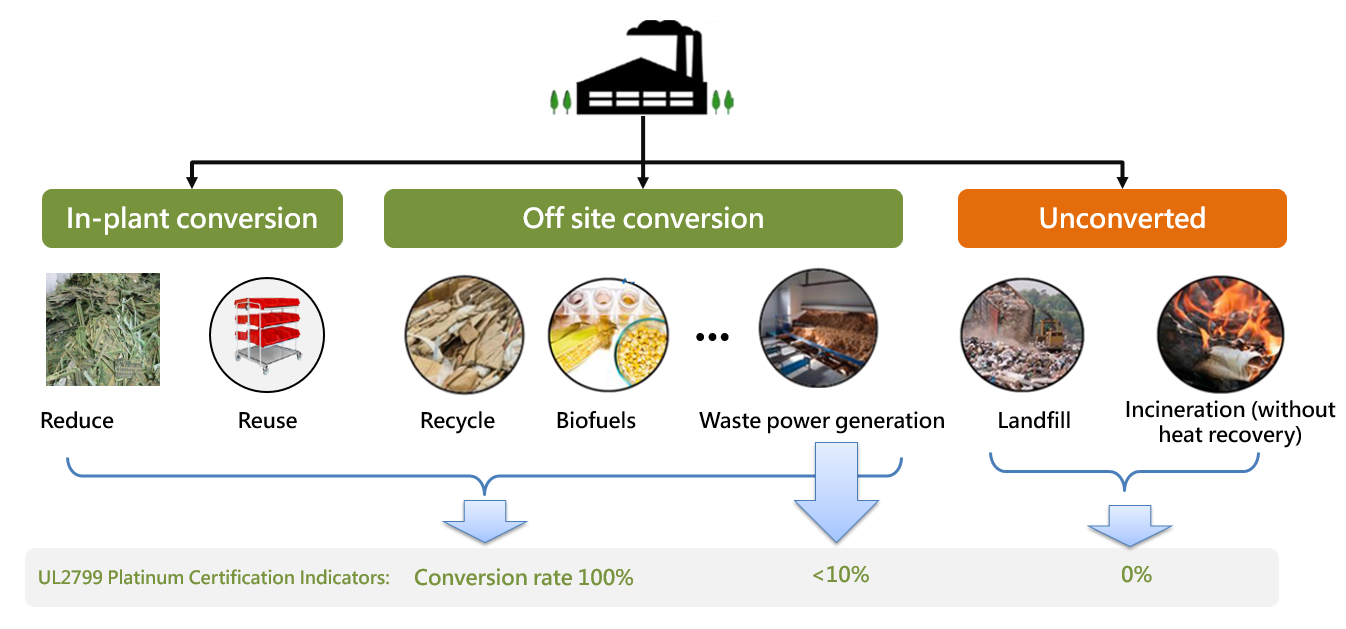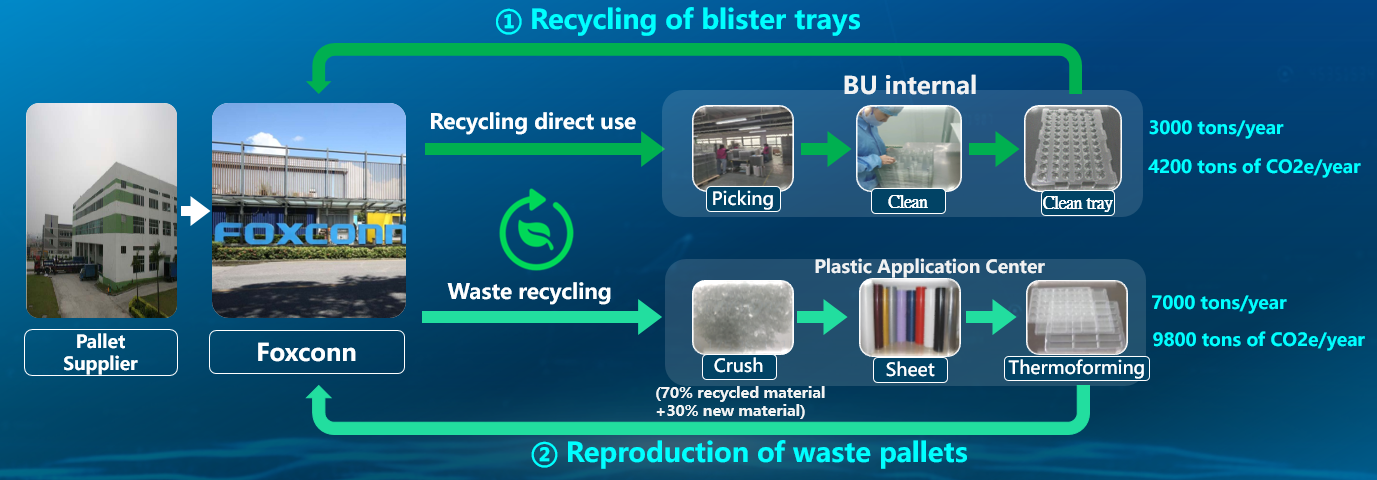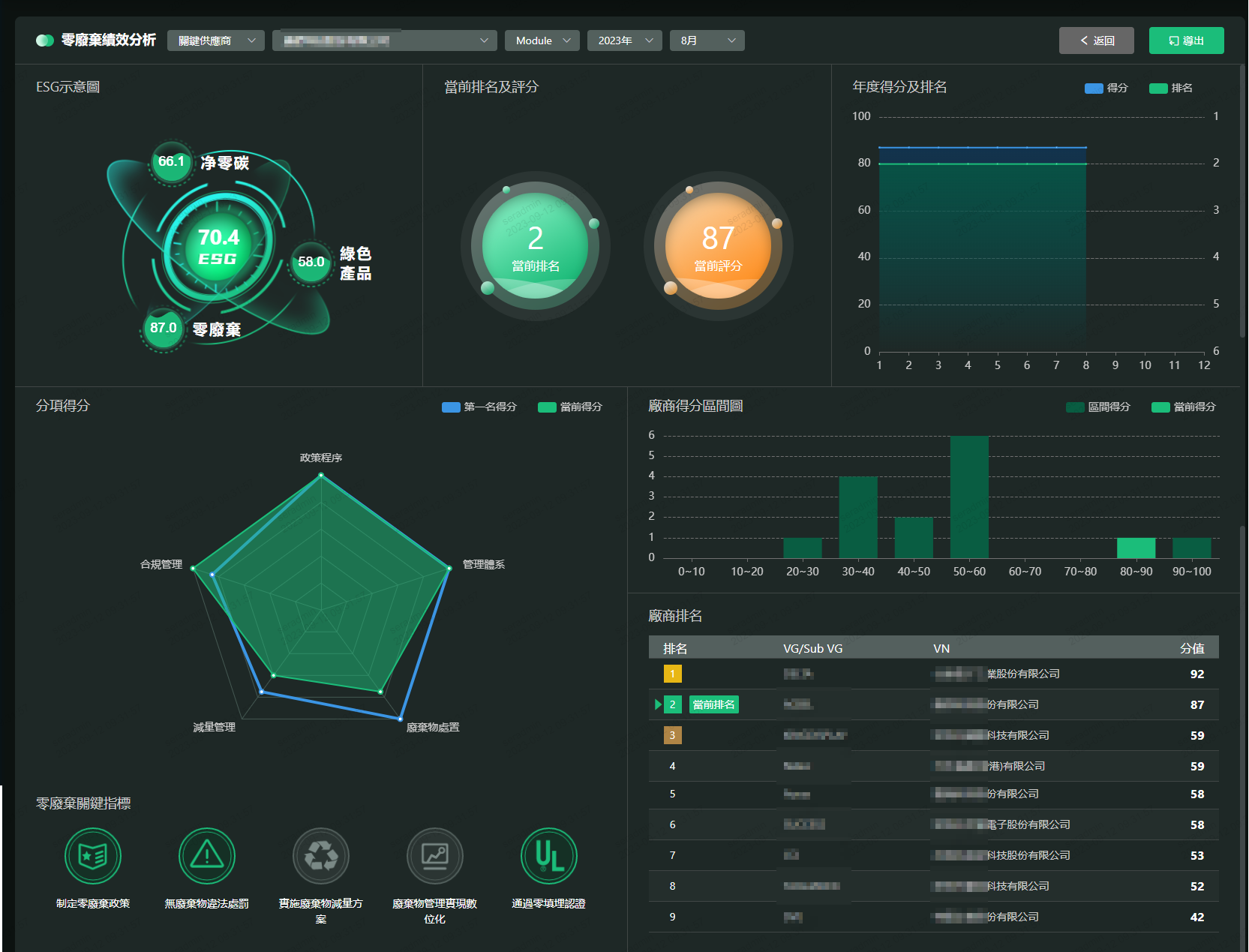Foxconn Technology Group (hereinafter referred to as Foxconn), as the world's largest electronic technology manufacturing service provider, continuously improves the level of environmental protection and waste reduction throughout the entire industry chain, and strengthens cooperation with customers in environmental management. In recent years, the reduction, resource utilization, and harmless disposal of factory waste has become a very important topic in the electronic industry supply chain. To promote resource recycling and implement the group's Net Zero reduction goal, Foxconn's "Zero Waste Park" plan includes solid waste in environmental management and collaborates with globally renowned third-party UL to promote zero landfill certification (UL 2799 certification) for park waste. UL 2799 is the world's first standard for proposing waste conversion solutions and calculations, which has attracted widespread attention in the industry. For manufacturing enterprises, "UL 2799" is one of the most stringent standards for zero landfill certification of waste, requiring at least 90% of waste to be converted through non waste power generation methods, rejecting ineffective landfill and incineration without energy recovery in order to obtain different levels of certification. From low to high, it is silver, gold, and platinum. As of 2023, a total of 20 Foxconn parks have passed UL 2799 certification.

Figure 1: Schematic diagram of zero landfill of factory waste
While building its own "zero waste park", Foxconn also extends this concept to the supply chain. Therefore, we have set a long-term goal of promoting a total of 25 or more suppliers to obtain zero landfill certification for waste by 2025. We hope to promote our suppliers to recognize and adopt zero waste management, help them save resources, protect the environment, and enhance reputation, while also obtaining economic benefits, reducing production and operating costs, and enhancing core competitiveness.
To create a benchmark case for waste recycling and utilization, Foxconn's central procurement actively promotes the recycling of bulk raw materials and reduces carbon emissions caused by raw material mining. Firstly, cooperate with suppliers to promote cooperation projects on recycled aluminum. Under the traditional manufacturing model, each ton of aluminum generates 15 tons of CO2e in carbon emissions, while the carbon emissions generated by recycled aluminum per ton are only 2.8 tons of CO2e. Foxconn is expected to reduce carbon dioxide emissions by 83000 tons in 2023 through the collaborative project on recycled aluminum.

Figure 2:Carbon reduction schematic diagram
Secondly, Foxconn requires a large amount of plastic pallets in its production process. Although the pallets have been repeatedly reused, they generate a large amount of plastic waste after losing their value, causing a great burden on the environment. To this end, Foxconn is promoting the recycling and utilization project of blister pallets, achieving tray recycling. It is expected that in 2023, it will reduce plastic procurement by 3800 tons and reduce CO2e emissions by 5320 tons.

Figure 3: Schematic diagram of plastic tray recycling
To encourage suppliers to actively adopt zero waste management and actively apply for third-party zero landfill certification, Foxconn has included the "zero waste" project into supplier ESG performance evaluation. It evaluates suppliers’ zero waste management performance from five dimensions: policy procedures, compliance management, 3R management, waste disposal, and management system. In 2022, the first batch of zero waste management monthly performance evaluations were implemented on 75 key suppliers, and it is planned to expand the evaluation scope to more suppliers by 2023.

Figure 4: Supplier Zero Waste Performance Evaluation Dashboard
With the guidance and promotion of Foxconn, at the end of 2022, a total of 10 suppliers have obtained third-party zero landfill certification (such as UL2799), and a total of 39 suppliers have developed and implemented waste reduction plans, achieving the expected promotion goals.
|
Project
|
Transformation measures and benefits
|
|
Dry ice mold cleaning
|
Before the transformation of the forming station, traditional cleaning glue and lubricating glue were used for mold cleaning, resulting in 5 molds of waste rubber cakes; After the transformation, dry ice was used to clean the mold, and specialized equipment was used to clean the grinding tools. Only one mold was moistened, resulting in one mold of waste rubber cake, reducing waste production by 80%.
|
|
Sludge drying
|
Add one set of sludge drying machine to the wastewater biochemical treatment station to treat biochemical sludge, using a low-temperature 40~80℃ fully enclosed drying mode, without odor overflow, with a processing capacity of 1 t/d. It can dry the biochemical sludge with a water content of 70% after pressure filtration to 30% water content
|
|
Deep dehydration of membrane residue
|
The inner membrane residue of the inner and outer layer etching line stripping section of the tank is in a floating state, which is transported to the membrane residue dehydration equipment after centrifugal filtration by a drum. Double screw extrusion and heating are used for secondary solid-liquid separation to form a dry powdery membrane residue and reduce waste production. Compared before and after installation, the average weight loss rate can reach 70%.
|
|
Film waste reduction
|
Add 4 film waste dewatering machines and use physical methods such as pressing and crushing to reduce the weight and weight of film waste with a moisture content of approximately 85% -90%, thereby reducing the amount of film waste transported out.
|
Figure 5: Supplier Excellent Waste Reduction Project List
Foxconn actively promotes suppliers that generate solid waste to fill in PRTR (pollutant emission transfer data) on the IPE platform, and publicly discloses the generation volume, comprehensive utilization volume and reduction target of solid waste (including hazardous waste) in the next year. Use the power of the public to urge suppliers to manage solid waste in compliance and reduce it year by year. In 2023, Foxconn's central procurement division promoted 145 suppliers to fill in PRTR data. These suppliers produced a total of 187,840 tons of general solid waste and 527,145 tons of hazardous waste in 2022. The comprehensive utilization volume of general solid waste reached 134,822 tons, and 42 suppliers has publicly disclosed its industrial solid waste and hazardous waste reduction targets for 2023. Successful achievement of these targets is expected to reduce 7,791 tons of general solid waste and 2,006 tons of hazardous waste.
Foxconn continues to lead the entire value chain in waste reduction and carbon reduction, and will promote zero landfill of supplier waste as one of the important carbon reduction measures in the future. It will continuously improve the waste conversion rate in supplier factories, reduce the demand for Earth resources in the supply chain, and ultimately achieve Foxconn's goal of net zero carbon emissions in the entire value chain by 2050.
(The above content is provided by the brand, and the authenticity of the data is the responsibility of the brand. This article has both Chinese and English versions. If there is any inconsistency, the English version shall prevail.)